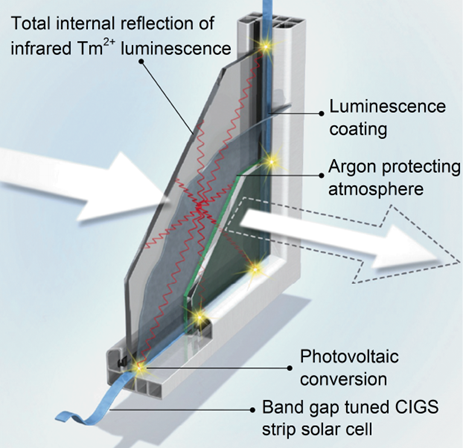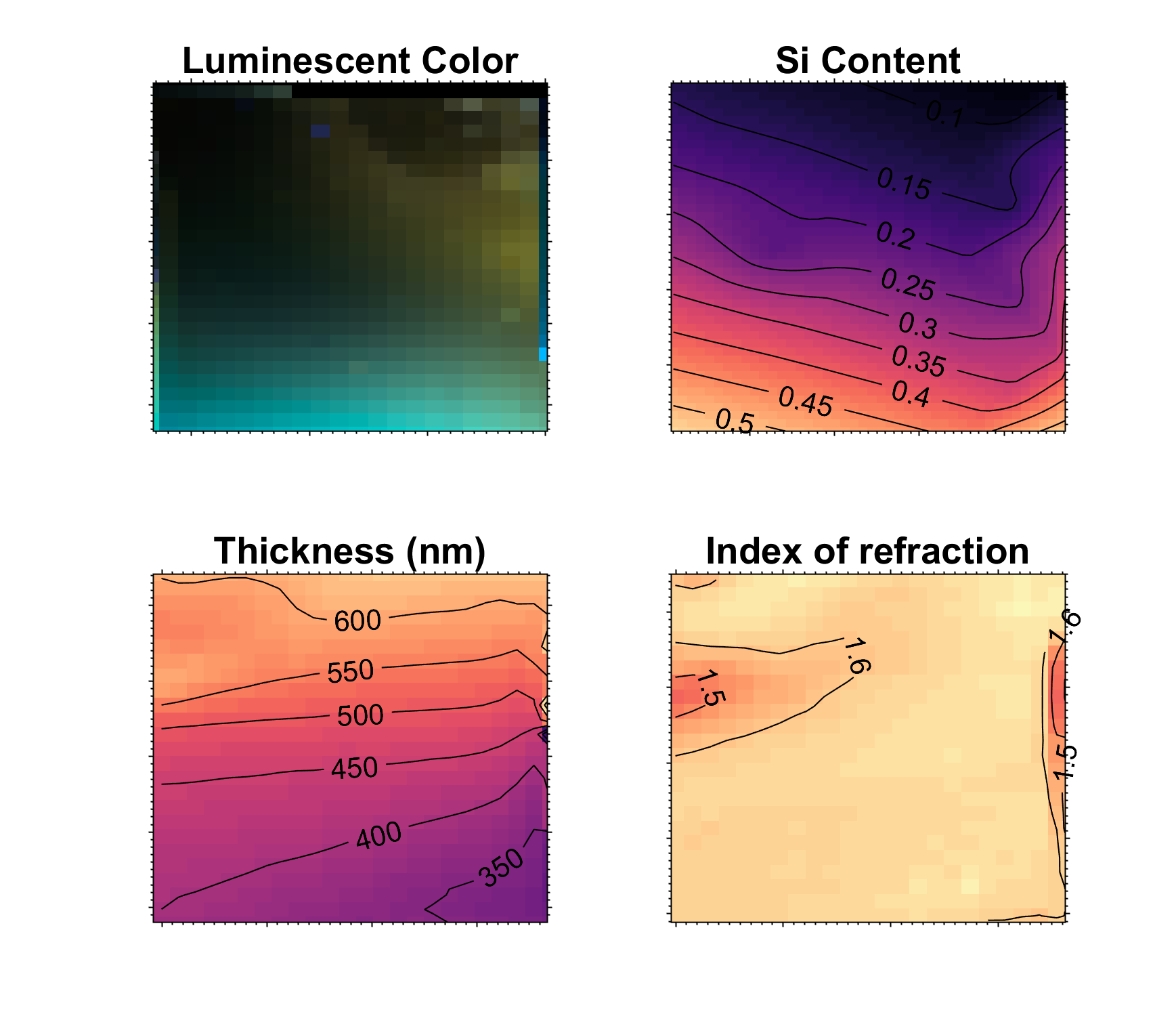Student projects
Building-integrated Photovoltaic windows based on the Luminescent Solar Concentrator principle
Luminescent materials have two truly unique properties that make them ideally suited for application as coating on glass to make electricity generating windows. They are able to spectrally concentrate a wide range of the solar spectrum to a single wavelength, and they are able to spatially concentrate this light, without the use of lenses or mirrors, to a narrow surface area. These two properties can be combined in a so-called Luminescent Solar Concentrator (LSC) that consists of a luminescent coating on glass that absorbs part of the solar spectrum and re-emits this energy in the form of luminescence that is trapped, just like in a fibre optical cable, and can only escape at the edges of the glass window where strip shaped solar cells convert the light into electricity.
Current BEP and MEP work involves tackling many scientific challenges related to the luminescent coatings like understanding (i) the rare earth valence stability, (ii) the 5d energy level splitting and location, (iii) the formation of thin-film solid solutions, (iv) defect formation and rare earth solubility, (v) combinatorial reactive co-sputtering of thin-films. The realization of record-braking LSC prototypes is one of the more technological challenges.

Figure 1: Impression of a semi-transparent, colourless LSC-based PV-window, in which a luminescent coating absorbs and re-emits sunlight that is wave-guided by total internal reflection to the glass edges where solar cells convert the light into electric power. In our group new luminescent materials are developed in close collaboration with TUDelft start-up Physee.
We have unique approaches to systematically synthesise and explore luminescent materials that you can use to develop materials for a sustainable future!
One of them is off-axis combinatorial co-sputtering of Si, Al and Eu in an O2/N2/Ar reactive atmosphere as a technique to explore luminescence properties of films within a large composition gradient, requiring only a single deposition. Using automated xy-scanning of transmission-, emission-, and decay spectra, local film properties like wavelength and intensity, absorption, index of refraction, decay time and thickness could be related to local composition in so-called phase diagrams. This resulted for example in Lanthanide doped SiAlON films that are both amorphous with low scattering and show efficient luminescence. Many of their interesting but so far unexplained properties are waiting to be studied.

Figure 2: A 5x5cm thin luminescent film deposited by combinatorial co-sputtering af a NaCl and a Europium target resulting in blue and yellow luminescence from Eu2+ defects in the NaCl crystalline environment. The composition was measured by so called SEM-EDX (energy dispersive x-rays). The thickness and index of refraction were obtained from fitting position dependent transmission spectra that were obtained by automated xy-laser scanning. Results show that blue 427 nm luminescence originate from single Eu2+ substitutional defect, while yellow emission is due to hitherto unknown types of defects, with emissions at 459 nm and 530 nm.